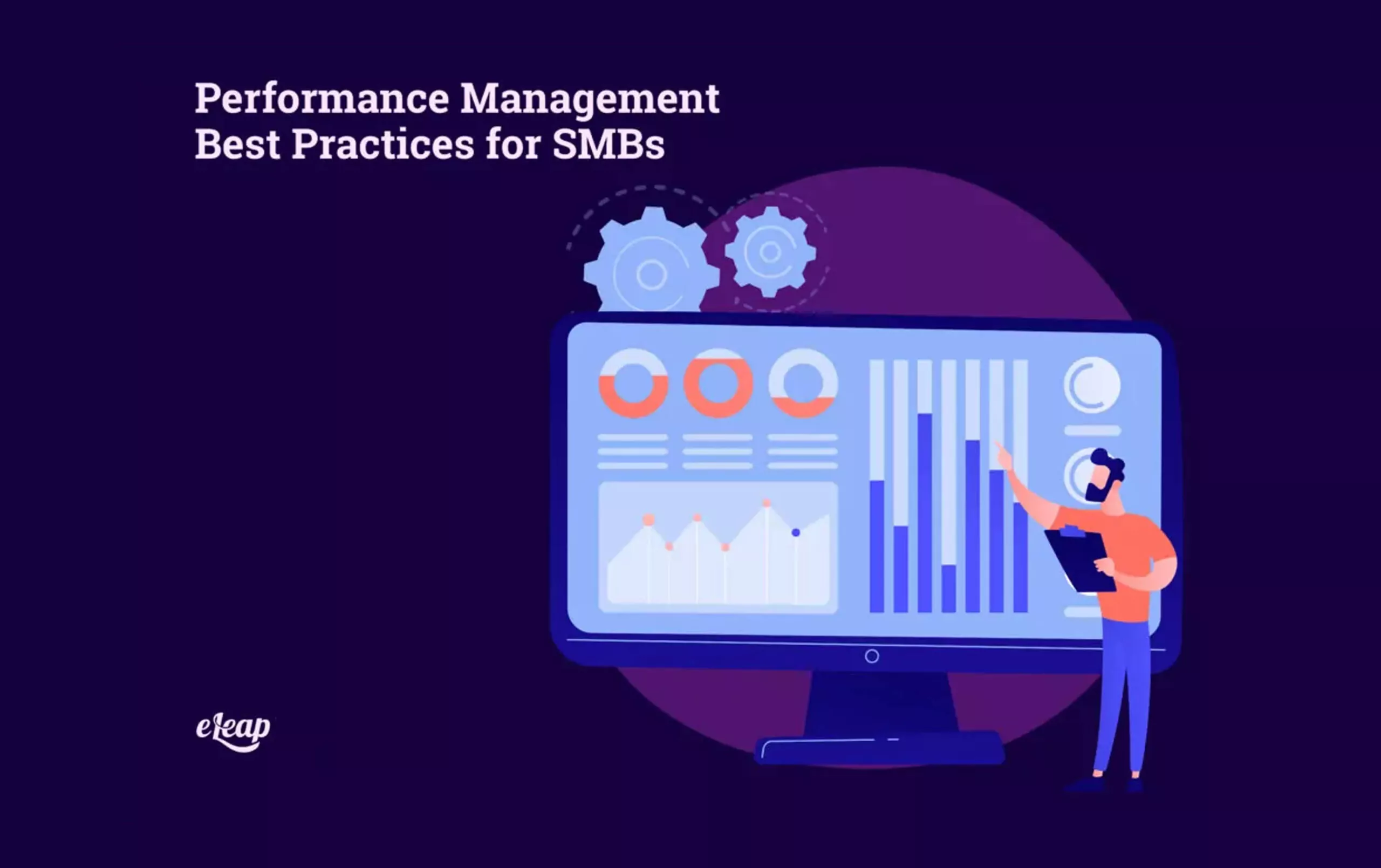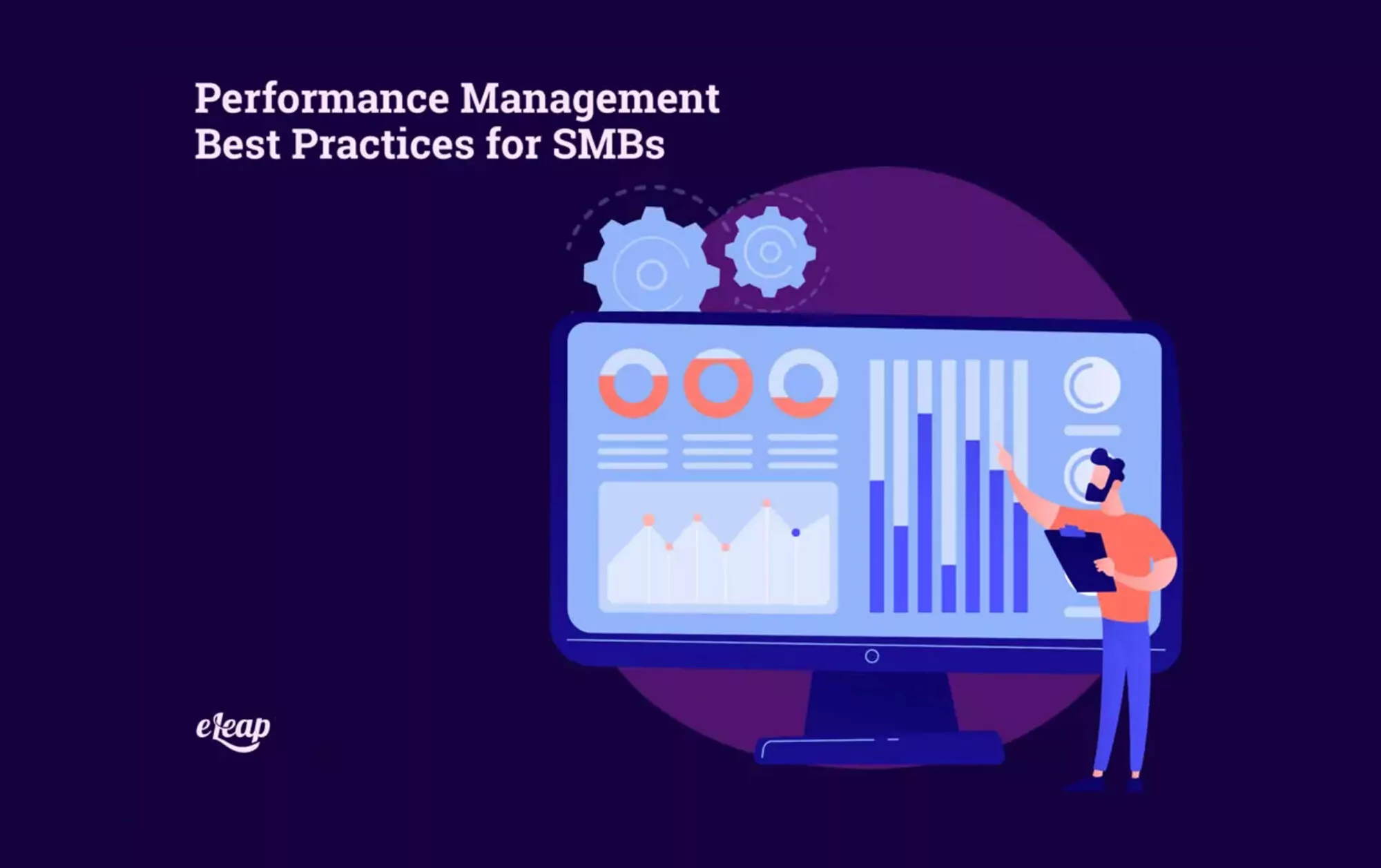Performance Management Best Practices for SMBs

Too often, the performance management discussion tends to center around larger businesses. That makes sense on a certain level, but the truth is that even the smallest of SMBs can benefit from implementing performance management best practices. What are they, though?
While SMBs may have different operating budgets than their larger counterparts, you’ll find that performance management best practices are very similar. It’s more about how they are implemented than anything else. In this guide, we will explore what SMBs should know about performance management, and what they need to do to engage and build their human talent.

Get a PMS
The first thing to cover is this: without the right technology, your job will be much harder. Invest in a performance management system that allows you to automate much of the process. It will free up time, save hassle, and reduce costs while helping to improve outcomes across the board.
Which system, though? That’s where things get tricky. There are numerous options on the market, and they’re really not all that similar. While there is no one-size-fits-all answer here, we can offer some pointers that will help you find a PMS that works for your needs and budget:
- Make sure it’s a cloud-based system. Cloud-based PMSs are more agile, are often more affordable, and deliver outstanding performance.
- Make sure it’s scalable. Your business might be small now, but it will grow. Make sure the PMS you choose can scale with you as your teams expand and your needs change.
- Make sure it automates your performance management workflows. Otherwise, the system doesn’t really add the value you need.
Kill the Annual Review
Interestingly, many larger businesses have already stopped or dramatically altered the annual performance review process, but many SMBs continue the practice. Annual reviews are “the thing to do”, but no one seems to find them valuable. So, why do we continue? It’s usually because SMBs are not aware that there is a more effective option.
Why do annual reviews not work? Numerous reasons contribute to that lack of traction, including:
- They’re incapable of fostering real change because they address problems, challenges, or behaviors long after they happen. In many cases, the issues brought up may have occurred almost a full year before. What value can an employee possibly take away from a discussion about something that occurred so long ago they can barely remember it?
- They’re not capable of providing real-time course corrections, which are vital for driving value and real change.
- They’re often dreaded situations that feel more like a punishment than an opportunity for growth, no matter how you might “dress them up” with language that indicates otherwise.
- They’re usually punitive in nature and peg an employee’s ability to survive on nebulous ideas and often-inaccurate information.
So, if annual reviews are out, what’s an SMB to do? How do you coach employees and build performance? The answer is to have frequent feedback sessions, also called sit-downs or check-ins.
Implement More Frequent Feedback Sessions
The entire point of performance management practices is to raise the level of an employee’s performance. It’s about course correction and growth. To achieve these goals, feedback must be:
- Timely: This is perhaps the single largest consideration – any feedback to improve performance and change behavior should be timely. Otherwise, it has little impact on the employee or their behaviors. The closer to an event your feedback is provided, the more value that feedback will have, the more constructive it will feel, and the greater chance there is of positive change and growth. The farther removed feedback is from the event or behavior, though, the less impact and value it will have, and the more punitive it will fee.
- Accurate: Feedback must be accurate. Accuracy requires recency and relevancy. All feedback should be focused on the situation at hand and geared to help the employee learn, grow, and succeed.
- Meaningful: If feedback has little meaning for the employee, then it’s largely pointless. Tying feedback to punitive measures was originally seen as a way to give it more meaning and impact – do this or you won’t get a raise. However, we now understand that this does not result in positive growth, but creates a defensive, negative attitude. Instead, tie feedback to positive meanings.
- Actionable: Finally, make sure your feedback is actionable. “Don’t do that again,” is not particularly actionable. Instead, “Make sure you monitor email more closely to catch critical customer complaints and escalate them as necessary” is much more actionable. Ensure that you provide the employee with a path forward. They need a clearly defined road to improvement, with milestones along the way if necessary.
How frequent should these sessions be, though? Ideally, you will have check-ins very frequently, perhaps as often as once per week. One-on-one meetings can occur somewhat less frequently. Some SMBs find that the best schedule for them is once every two weeks, while others have them once per month. The key is to analyze your needs and set a schedule that helps you move forward, while also ensuring that sessions are frequent enough to effect real, meaningful change for employee behavior.
Don’t Disconnect Consequences
While performance management should not be punitive in nature, it should be tied to consequences. You must connect employee performance efforts to specific goals and outcomes. This includes potential termination if an employee fails to improve toward stated goals.
However, to do that, you must have both procedures in place, and records relating to employee performance and termination. You need to keep detailed records of each check-in and one-on-one, progress (or lack thereof) toward improvement goals, further behavior problems, and more.
Ultimately, performance management best practices for SMBs are not very different from those that apply to larger organizations. The most important thing is to ensure that you have the right PMS in place to provide the agility and support needed in smaller businesses. It’s also vital for ensuring consistency, maintaining records, and monitoring improvements.